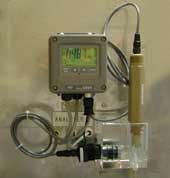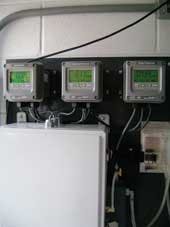by John Becker adn Michael Strahand
The US historically uses both groundwater and surface water as a source of drinking water. In addition to concerns over the availability of groundwater, there can be significant issues with water quality when groundwater and surface water are mixed. Most surface water treatment plants use chlorine as a disinfectant, while chloramine is often used for the disinfection of groundwater for drinking water.
When groundwater and surface water mix in the distribution system, the chlorine and chloramine disinfectants combine to form a residual substance which contains ammonia, free chlorine and monochloramine. As a result of the increasing combination of surface water and groundwater, it is essential that water treatment plants are able to carry out accurate monitoring of these chemicals in water to avoid any potential health consequences.
Ammonia monitoring has traditionally been undertaken by automated versions of ammonia-selective ion electrodes, but these methods are geared toward laboratory applications. These conventional systems generally use expensive and complex instruments which are difficult to maintain and often require external service contracts.
Technology recently introduced to the water market offers a completely new approach to simultaneous on-line monitoring of chloramines and ammonia which is simpler, cheaper and more stable than conventional monitoring equipment. With this technique, measurement of both ammonia and chloramine can be carried out on one instrument.
The technique has been adopted by Analytical Technology Inc. (ATi) and is incorporated in its new Q45N Dissolved Ammonia Monitor. The system uses reaction chemistry to convert ammonia in a solution to a stable monochloramine compound, equivalent in concentration to the original ammonia level. The chloramine concentration is then measured with a unique amperometric sensor that responds linearly to chloramines while eliminating interface from excess free chlorine in solution.
Much cheaper than conventional monitors, the new technology has the added advantage of allowing direct re-injection of the water withdrawn for monitoring purposes back into the distribution system without the need for discharge to a sewer. Maintenance of the new monitors is simple and can be managed by utility staff. The new Q45N monitor can also be used with ATi’s free chlorine monitor to provide measurement of free chlorine, chloramines, free ammonia and total ammonia.




